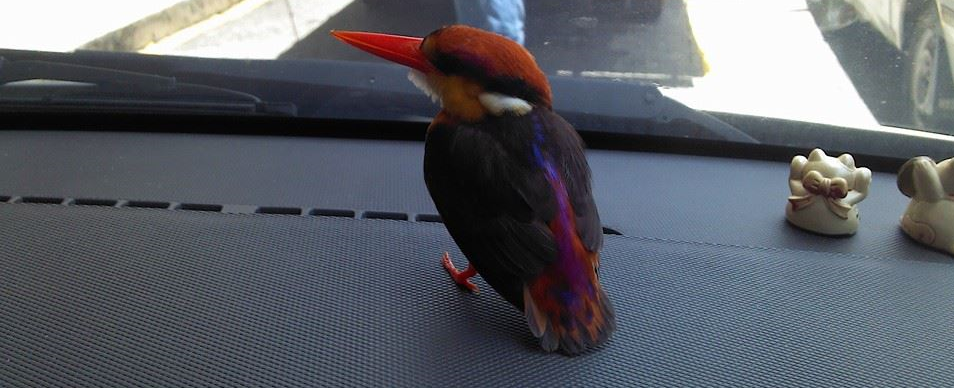
Lesser White-Fronted Goose (Anser erythropus) looked slightly smaller compared with the ducks in the farm. This endangered goose is considered a rare winter visitor/vagrant to Taiwan and we were very lucky to see it early that morning as we entered the last day of birdwatching in southwestern coast of Taiwan. We had a night flight to catch at the Taoyuan International Airport. This species of Goose is classified as Vulnerable in IUCN redlist HERE.
This Lesser White-Fronted looked like it was trying to mingle with the ducks. The ducks looked bigger than this Goose - I wonder whether this could be due to hormone injections. Have read that such injections are common practice in industrial duck farming to expedite the growth rate and subsequent supply of duck meat for the hungry hordes of humans. Hopefully this is not the case for the ducks in this farm, and that there would be agricultural grains fed to the ducks, with some to spare for this endangered goose as it looked to be spending its winter with the ducks in the farm. How this Goose ended up in this farm remains a mystery. Nevertheless, the Lesser White-Fronted Goose was indeed a sight to behold, its greyish plumage standing out amongst the snow white plumages of the ducks. It had such a slim neck, pink beak and such pink webbed feet! Its occasional honks almost drowned out by the noisy quacking of the ducks which were in the hundreds.

Lesser White-Fronted Goose "honk-ing" to the ducks

Wild Goose trying hard to mingle with ducks

Lone Goose figuring out where it stands......

Lesser White-Fronted attempts to mingle again with the ducks

The ducks seem bewildered by this individual Goose

LWF Goose lowers it neck and appears to be looking for food

Ducks are moving away from the LWF Goose

LWF Goose looks lonely and hungry

Off it goes in search of food on the sandy soil

LWF Goose facing us neck down in quite a threatening-looking pose...

But it was actually poking its beak into sandy soil looking for food

LWF Goose waddles daintily forward...

In search again of tasty morsels hidden in the sand
World Wide Fund for Nature in Finland has a Project known as the Lesser White-Fronted Goose Life Project which you can read about HERE.
This Lesser White-fronted Goose, alone, hungry and trying its best to mingle with the domesticated ducks in the wind-swept coast of Taiwan, was the subject of a poem written by a Chinese scholar centuries ago. The poem, in English as below:-
Lone Wild Goose (Du Fu, Chinese poet)
Alone, the wild goose refuses food and drink,
his calls searching for the flock.
Who feels compassion for that single shadow
Vanishing in a thousand distant clouds?
You watch, as it vanishes from sight,
Its plaintive calls cutting through you
The noisy crows ignore it:
the bickering squabbling multitudes




































